In memory of the tragedy of Hiroshima and Nagasaki 75 years ago, please take a moment to read and share this salient message.
As countries and their citizens grapple with unprecedented challenges, consider this…any progress made towards tackling these issues will come to an end – along with life as we know it – if we don’t address the impending threat of nuclear weapons.
The nuclear weapons of today are up to 90 times more powerful than the atomic bombs that destroyed Hiroshima and Nagasaki. Not if – but when – there is an unintended failure of technology or an intended exchange, the earth will experience a nuclear winter that will disrupt humanity’s ability to grow food.
As an unparalleled famine ensues, an estimated 2 billion people would perish as a direct result of an entirely preventable catastrophe.

Ten years after the end of the Cold War, the threat of nuclear annihilation seemed to have – in the words of my dad, Ted Turner, “fallen off people’s radars.” In order to address what he knew at the time to be the biggest existential threat on the planet, he started the Nuclear Threat Initiative (NTI).
Two decades later, his words still ring true:
“We have lived virtually our entire lives under the threat of nuclear war. If there had ever been a logical reason for this state of affairs, it no longer exists. We have therefore decided to do what we can to work towards decreasing this threat. There is no greater legacy that we can leave our children than a peaceful and safer world.”
“World leaders must be reminded that the commitment to disarm embedded in the NPT and other international documents is more than a legal-political detail, it is a moral commitment on which the future of the world depends…Responsibility for the abolition of nuclear weapons is an essential component of the global common good.”
Pope Francis, The Holy See, 2014
Read the full statement here >>
Pope at General Audience on 50th Celebration of Earth Day: “The Earth Never Forgives”
In a statement last year, Pope Francis advocated for the abolition of nuclear weapons: “The use of nuclear weapons is immoral, which is why it must be added to the Catechism of the Catholic Church. Not only their use, but also possessing them: because an accident or the madness of some government leader, one person’s madness can destroy humanity.”
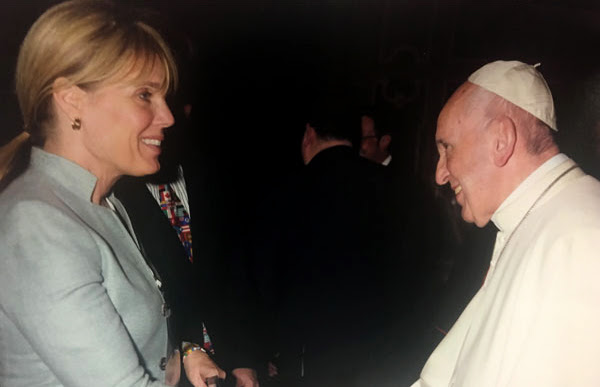
As a newly appointed board member of a Nuclear Threat Initiative (NTI), I have become a passionate advocate for nuclear weapons abolition. Between my father’s decades of work and my own experience with “duck and cover” drills as a child, I have been compelled to pick up the mantle of this mostly forgotten fight.
We must transform the dynamics of the world power struggle from the negative nuclear arms race, which no one can win, to a positive contest to harness man’s creative genius for the purpose of making peace.
Rev. Martin Luther King Jr., Nobel Lecture, 1964
“A nuclear war cannot be won and should never be fought.”
Ronald Reagan, State of the Union, 1984
75 years ago, Robert A. Lewis, co-pilot of the B-29 Superfortress bomber, Enola Gay, looked down from thousands of feet above Hiroshima as he thought to himself, “My God, what have we done?”
It may seem like a bygone era, but the thinning ranks of the hibakusha – survivors of the Hiroshima and Nagasaki atomic bombings – are living testaments not only to the human consequences of nuclear warfare but also how despair can pave the way for activism.
“The End of Nuclear Weapons”
International Campaign to Abolish Nuclear Weapons (ICAN)
75 Years Later, We Are Still Living with the Consequences
Inspiring work by groups like International Campaign to Abolish Nuclear Weapons – winner of the 2017 Nobel Peace Prize, the International Physicians for the Prevention of Nuclear War– an active member of the WHO Violence Prevention Alliance and winner of the 1985 Nobel Peace Prize, Global Security Institute, Nuclear Threat Initiative, and others, has led to significant progress.
However, despite the significant progress in reducing total nuclear stockpiles by 75 percent since their Cold War heights the risk of use of nuclear weapons is growing.
Nuclear proliferation still threatens life as we know it, and nuclear technology is only becoming easier to access especially in the absence of global leadership on the issue of nuclear proliferation, a role formerly filled by the United States.
Maintaining the United States’ nuclear arsenal is siphoning off resources that could be used to enrich the lives of its citizens and people around the world instead of endangering them. On an annual basis, this maintenance costs the American taxpayers an average of $30 billion according to conservative estimates.
Unfortunately, under this administration, the U.S. has threatened to pull out of NATO and intends to withdraw from the WHO.
International Physicians for the Prevention of Nuclear War (IPPNW), Winner of the Nobel Peace Prize
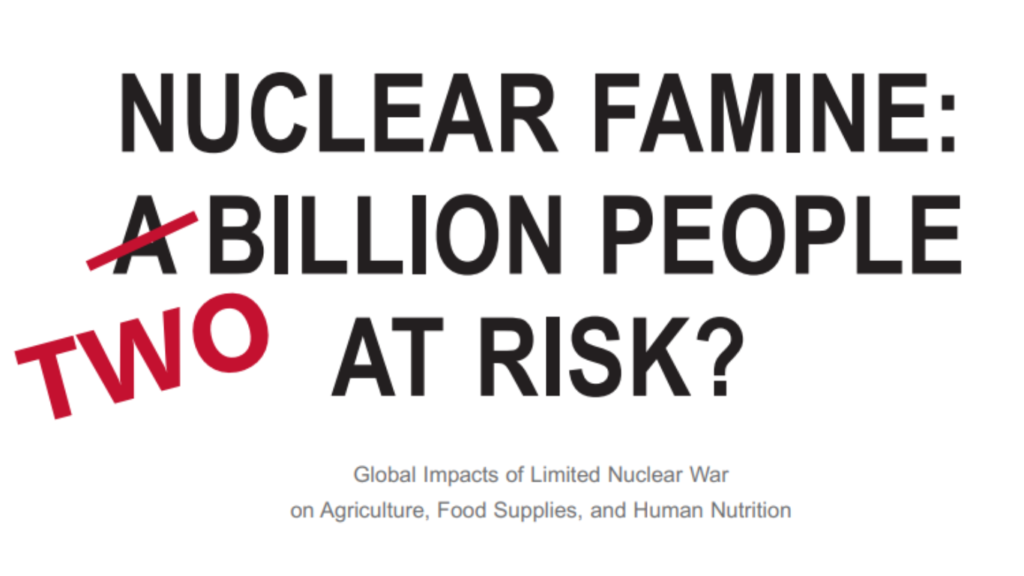
IPPNW was honored for its important contribution to activating opposition and mobilizing opinion against nuclear arms. These physicians made clear what will happen if these weapons were to be used. The atomic winter – with its destruction of the biosphere and of all conditions necessary for life. The IPPNW has shown there is no escape route, no feasible protection against an atomic catastrophe.
Interview with Beatrice Fihn, Executive Director of the International Campaign to Abolish Nuclear Weapons (ICAN), Winner of the 2017 Nobel Peace Prize, on the Nuclear Weapons Ban
Beatrice Fihn answers questions about new ideas in weapons governance discussed at the New Shape Forum 2019 in Geneva. Fihn is the Executive Director of the International Campaign to Abolish Nuclear Weapons (ICAN), the 2017 Nobel Peace Prize-winning campaign coalition that works to prohibit and eliminate nuclear weapons.

What is the Role of the U.S.?
In a presidential memorandum a week after he took office, Trump called for the Pentagon review “to ensure that the United States nuclear deterrent is modern, robust, flexible, resilient, ready, and appropriately tailored to deter 21st-century threats and reassure our allies.”
President Trump has SOLE AUTHORITY
In May of this year, the Trump Administration discussed whether to break the United States’ decades-long moratorium and conduct the first U.S. nuclear test explosion since 1992 — and the first known test this century by a nation other than North Korea.
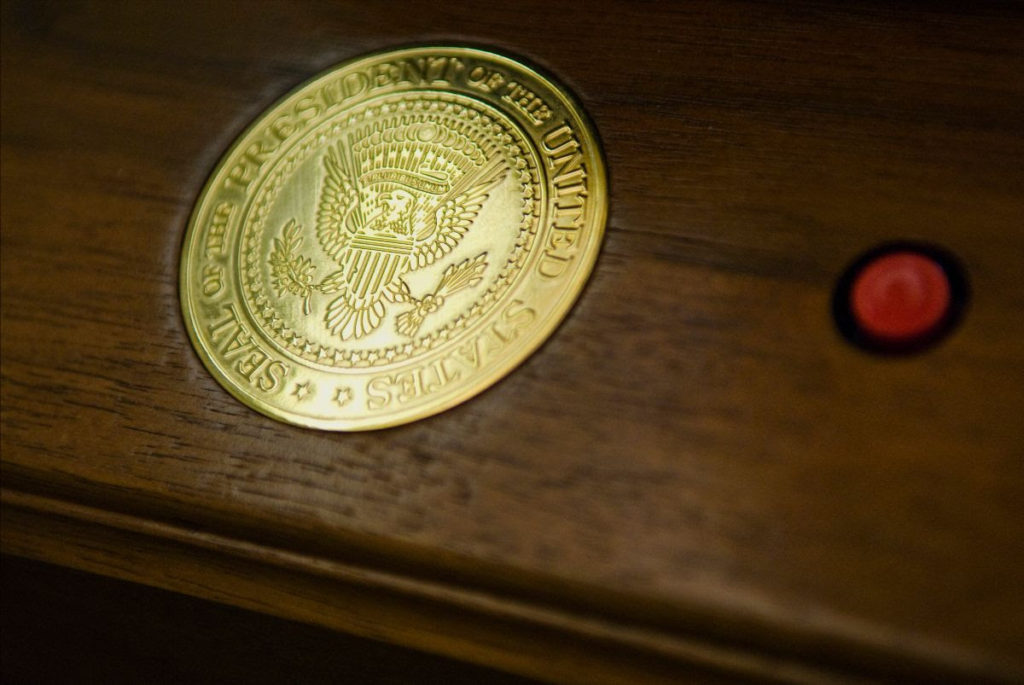
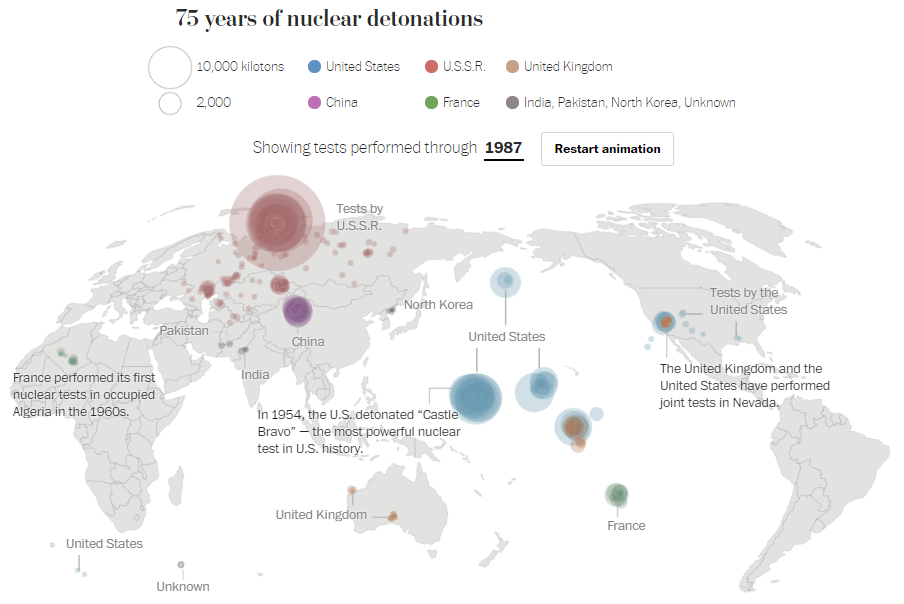
A Return to Testing Would Inflame International Tensions
Rather, our strategic posture should be that which served us well during the Cold War: a balanced commitment to deterrence and détente. This means leaders must recognize their responsibility and reinforce the principle that a nuclear war cannot be won and must never be fought.
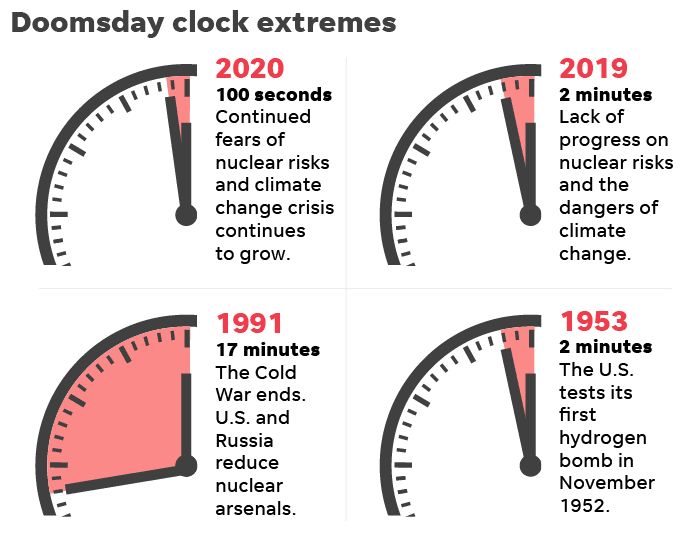
The Doomsday Clock Now Shows 100 Seconds to Midnight
75 years after Hiroshima and Nagasaki, the world is closer than ever to a nuclear disaster. The closer to midnight we are, the more danger we are in. In 2020 the Bulletin of Atomic Scientists moved the minute hand for the 24th time – from 2 minutes to 100 seconds. The move to measure the threat in seconds versus minutes attests to growing concern among experts.
The Nuclear threat is out of sight and – for most – out of mind. These films help put things into perspective.
America has over 4,800 nuclear weapons, and we don’t take terrific care of them… Check out this segment from John Oliver’s Last Week Tonight
See how America developed the most destructive invention in human history – the nuclear bomb – how it changed the world and how it continues to loom large in our lives. Hear from historians and those who experienced the dawn of the atomic age.
Although the Cold War is behind us, the threat of nuclear disaster remains very real. Director Lucy Walker discusses the invention of the atomic bomb and brings the story into the present day, examining the possibility of nuclear calamity under the categories of “Madness,” “Accident” and “Miscalculation.” With narration by Gary Oldman, the film includes a hypothetical sequence of a nuclear explosion in New York City’s Times Square, timed to coincide with the New Year’s Eve countdown.


